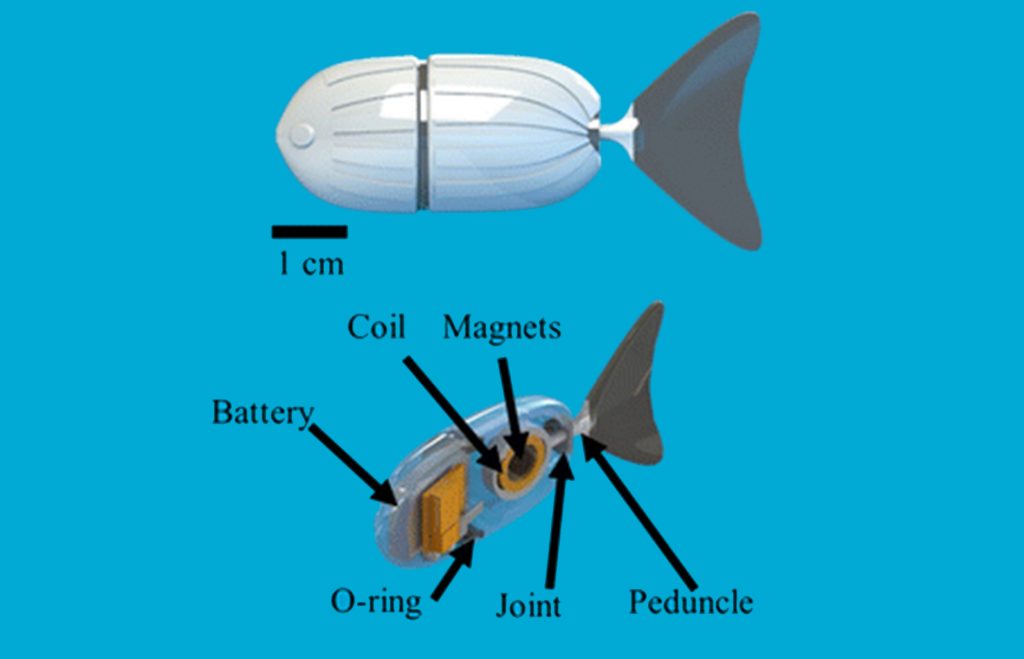A collaborative research team from the Tandon School of Engineering in New York and the Politecnico di Torino in Turin have 3D printed a multi-material robotic zebrafish. The robo-fish mimics the behavior of its natural counterparts, blending in with the aim of discovering more about the complex lives of fish which in turn has implications for the non-aquatic realm.
3D printed design
Natural zebrafish typically measure around 4 cm in length, though they can grow up to 6.4 cm in the wild. The main challenge in designing a robotic counterpart is matching this size when containing operating components like the battery and magnets.

Using a Stratasys Objet500 Connex 3D printer and CAD, the team were able to accurately design a robotic fish measuring only 6.6 cm long. This is impressive considering the range of movements this robo-fish can perform; without the same internal components, smaller mechanical fish are typically only capable of swimming in a straight line.
The 3D printed components of Tandon and Torino’s fish come in two parts: the white outer shell, and a black tail. Stratasys rigid Vero resin is used for the body to protect the electronics, and rubbery Tango is used for the fin. As the study states, “The application of multi-material printing enables the robotic fish design to simplify to only two parts”.
Five second memory is more powerful than you think
So why would you want to create a 3D printed robotic fish? The unison movement of fish in shoals is a characteristic universally taken for granted, but just how they manage it is still something of a mystery.
Clip from HD: Underwater Armageddon – Nature’s Great Events: The Great Tide – BBC One via BBC on YouTube
Movement on this scale requires almost telepathic connections between the fish and, in robotic research scientists are trying to learn more about it. The research has implications for the advancement of artificial intelligence, and also for the preservation of marine life. Robotic fish could be deployed to lead fish away from underwater turbine intakes, or the research extended to encourage flocks of birds to migrate to new habitats. For example, if a forest was destroyed by wildfire.
More fishy 3D printing research
MIT are another institution exploring the potential of using 3D printing to understand the ocean’s organisms. Through a 3D printed hydrogel device, MIT researchers have been able to create a transparent, fish-catching hand. The soft robot harnesses the use of microfluidic channels to gently grab fish for examination – the same independent movement technology explored in Harvard’s Octobot.
In addition to applications for behavioral brain research and neuropsychobiology, the study of our scaly friends holds great potential for medical research. Zebrafish in particular were one of the first vertebrates to be cloned, and are widely investigated for regenerative properties as they can regrow heart and brain cells. Some genes extracted from the zebrafish are also successfully transgenic, meaning that then can be naturally adopted by other organisms.
For all the latest news about 3D printing on land, sea or in the air subscribe to our newsletter and follow us on social media.
Feature image shows a photo of natural zebrafish by Oregon State University on Flickr



